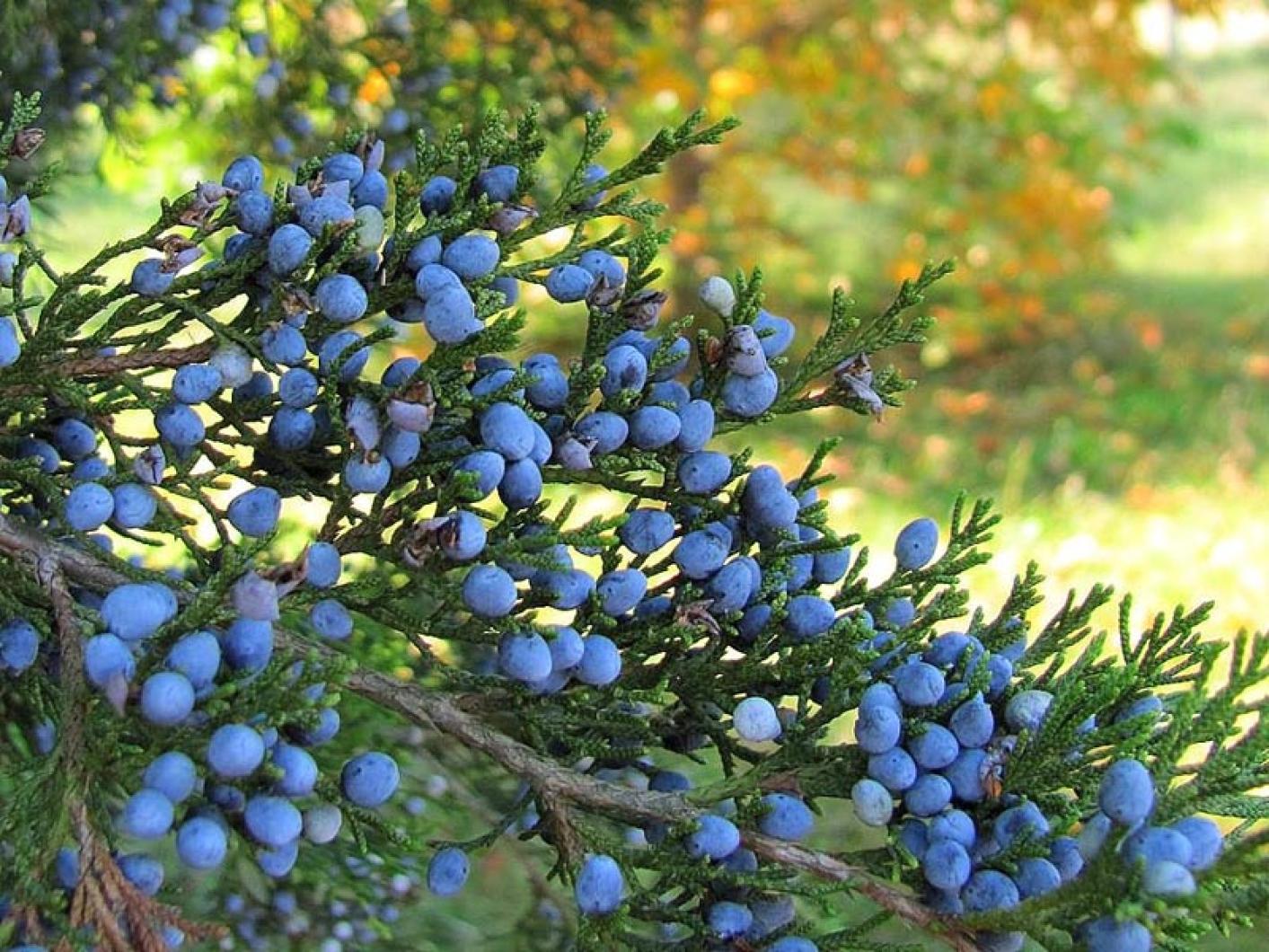Dick Jennings has a reason to be blue. His beloved red cedar trees on Cape Pogue are bare of blue berries. Naked, scaly branches offer no lunch for wildlife wanting a terrific treat to tide them over.
Evergreen red cedar trees nutritionally nurture nature. No less than 70 animal species rely on red cedar trees for food. Birds top this list of cedar berry consumers. Red cedar’s avian namesake, cedar waxwings, is known to consume copious amounts of this fruit, with one study showing that they gobble approximately 683 berries per day! Robins come in second in the berry eating contest, consuming more than 550 of these delectable nuggets. Mockingbirds, blue birds, ruffed grouse, turkeys, finches and grosbeaks will also take a taste. Mammals with seed needs, including bears, rabbits, raccoons and skunks, among others, can also be satiated by red cedar’s bounty of berries.
Edibility information on these berries for humans vary. Some sources describe the plant as mildly toxic, while others call them “slightly aromatic” and useful as a flavoring. My recommendation would be to look to red cedar’s relative, juniper communis, which lends its berries to flavor gin.
For cedar waxwings and red cedar trees, the benefits go both ways. These berries provide a source of fat and protein, while the tree gains a partner in propagation. One study determined that it takes only twelve minutes for the berries (and seeds within) to pass through the digestive system of the bird. However, during this short trip, interesting things happen. When the seeds emerge in the bird’s droppings, they are three times more likely to germinate than undigested seeds!
As a lover of wildlife, it is no wonder that Dick is concerned with the lack of berries this season and wondering about the reason for their scarcity.
Red cedar berries are found only on mature female plants, those aged at least ten years. Smash a berry between your fingers to find up to four seeds inside. Contrast the male plants, which have small tan cones that contain pollen. After windborne pollination, it can take a few months for the berries, which go from green to white and finally to blue, to mature.
Like the oak trees that produce acorns, red cedar trees can have strong, or ‘mast’ years, where copious amounts of those little blue balls are produced. Usually good years occur only every two to three years. On the off years, light years for berries (like the one we are having this season), occur and produce lower yields.
And to add to the challenge of an off year, research has shown that the production of berries can be affected by rainfall amounts. A drought year may cause a paucity of berries. Likely, both of these factors are at work, and perhaps are why Dick is seeing a lackluster cedar berry season.
Like the birds (or like Red Sox fans), Dick will have to wait for next year to see if this dismal year’s slump will persist. Until the cedar berries return, the birds will, of course, continue to sing, but they will likely be singing the blues.
Suzan Bellincampi is director of the Felix Neck Wildlife Sanctuary in Edgartown.




Comments (1)
Comments
Comment policy »